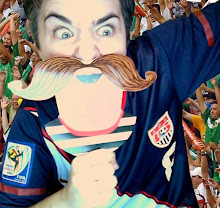Disclaimer: This project was actually finished a week or so ago. I've just been lazy. Sorry.
For our second collaborative project, we are working with punch registration and color inks. Up until now, we have been printing with only one image (run) in black ink. This time we are using two plates in two different colors printed on top of each other.
So we started with a flat... just a plain old solid rectangle.
To make the flat, we had to use a ruling pen with gum arabic to create perfect borders. Then we filled in the remaining rectangle with shellac and rolled it up in ink. We start with it in black, then switch to color when we're ready to print.
Next, we had our artist draw an image on a piece of mylar with toner (marketed as Litho Coal). The toner is a lot like what is in copy machines. You know, that powdery black stuff that can get stuck in your lungs and is really bad for you. We mixed a little bit up with some alcohol so that the artist could paint it on with a brush. Here is the image that I painted for Celina while it was still on the mylar:
Once the drawing is done on the mylar, you simply place it on the plate and run it through the press. This transfers the toner to the plate. Then you stick it in the oven and bake it for about 15-20 minutes. Etch it with 50/50 and you're ready to roll.
Patrick is my artist for this project. Here is his image on the plate:
Patrick picked out colors for me to mix. The flat is a creamy green and the toner image is a dark blue. Here is what it looked like when it was done:
When you start printing multiple colors and images on top of each other, it becomes incredibly important to have a good registration system.
For our purposes, registration can be defined as lining up two images so that the edges match up exactly. Good registration will also help you to print your image in the same spot on the page every time. If you want your image to be perfectly centered on the paper, you need a way to mark it so that you can lay it down precisely.
There are lots of methods of registration. So far this semester, we have been using the "T and Bar" Method. With this method you simply put pencil marks on the back of the paper that correspond to scratched in marks on the stone or plate. Skilled printers can get pretty good registration this way, but it becomes increasingly difficult to get exact registration with lots of colors.
With punch registration, we have a glorified hole punch (from Takach) that we use to punch holes in the plate and our paper. Then we have a little metal button or pin that we stick up through the hole and through our paper.
Punch registration is a great way to ensure you're getting your paper in the right place, but it can be tricky. It is very important to make sure that the image areas on all of your plates or stones are exactly the same size and shape... or it will never line up right. Even with pins.
Overall, Patrick and I had a fairly easy time with this project. The edges of my flat were pretty janky but I think I've got the hang of it now.
Wednesday, October 10, 2007
P-8: Collaboration II
Posted by
Porkchop
at
6:56 PM
![]()
Subscribe to:
Post Comments (Atom)






No comments:
Post a Comment